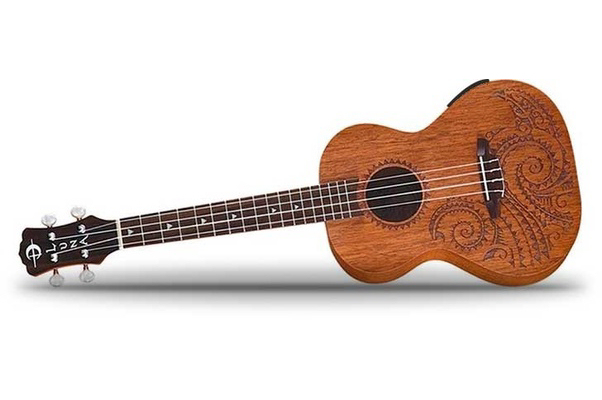The ukulele is a member of the guitar family of instruments. It generally employs four nylon or gut strings or four courses of strings. Some strings may be paired in courses, giving the instrument a total of six or eight strings.
The ukulele originated in the 19th century as a Hawaiian adaptation of the Portuguese machete, a small guitar-like instrument, which was introduced to Hawaii by Portuguese immigrants, mainly from Madeira and the Azores. It gained great popularity elsewhere in the United States during the early 20th century and from there spread internationally.
The tone and volume of the instrument vary with size and construction. Ukuleles commonly come in four sizes: soprano, concert, tenor, and baritone.
Less common are the sopranino (also called piccolo, bambino, or “pocket uke“), bass, and contrabass ukuleles. The soprano, often called “standard” in Hawaii, is the second-smallest and was the original size. The concert size was developed in the 1920s as an enhanced soprano, slightly larger and louder with a deeper tone. Shortly thereafter, the tenor was created, having more volume and deeper bass tone. The baritone (resembling a smaller tenor guitar) was created in the 1940s, and the contrabass and bass are recent innovations (2010 and 2014, respectively).
Click here sign up for Ukulele Lessons!!



